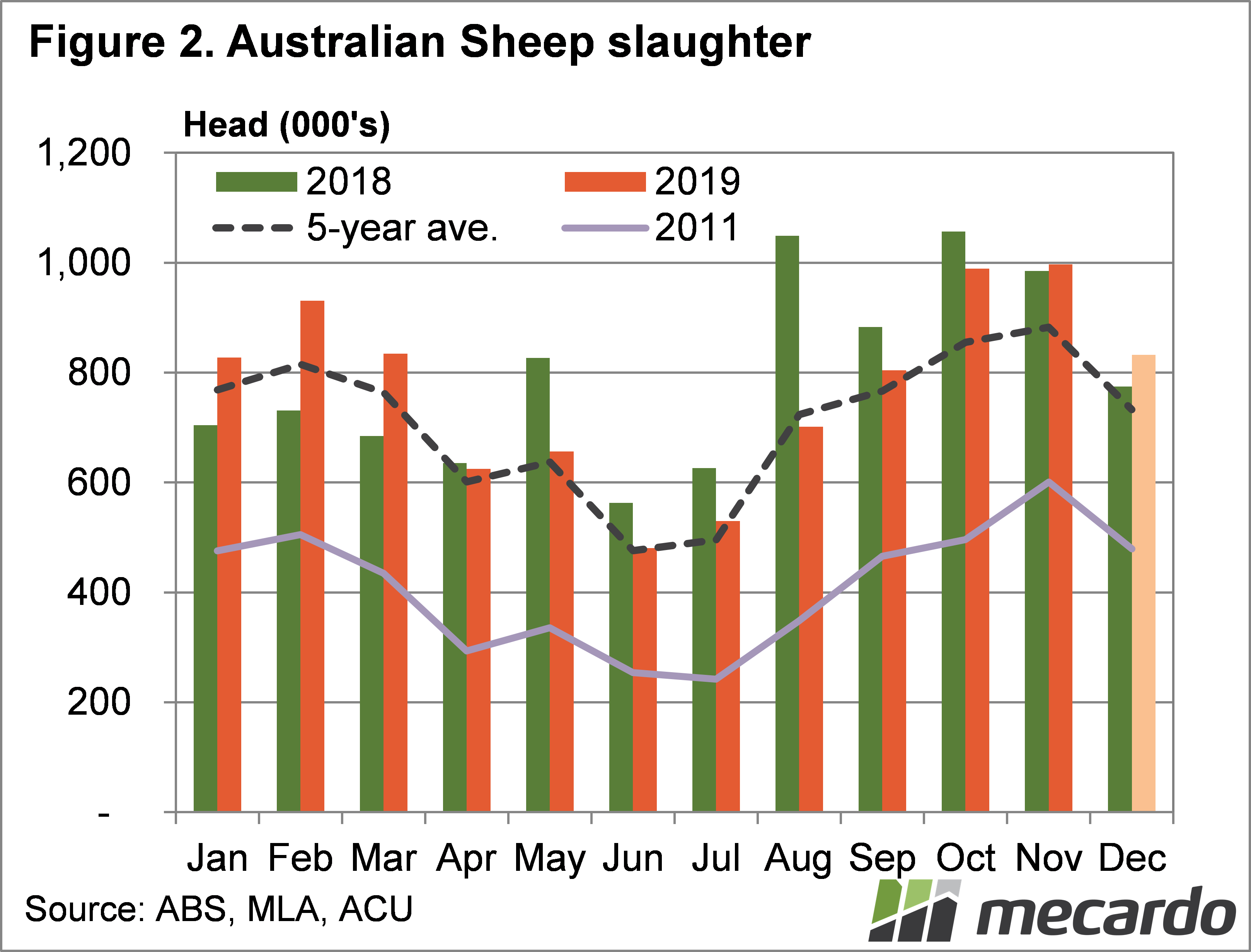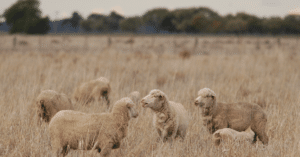The latest Australian Bureau of Statistics (ABS) release of the November sheep and lamb slaughter data offered few surprises. The weekly slaughter data released by Meat and Livestock Australia has opened up at very similar levels to last year. There is likely to be some tightening to come however, at least for sheep.
There have long been predictions of fewer lambs being available for slaughter this year. A smaller flock, and another dry year are key reasons why lambs slaughter should be down. The official November lamb slaughter numbers came in at 1.88 million head, a relatively large 9.2% lower than November 2018 (figure 1).
Year on year slaughter was down 13% in NSW and SA, 7% in Victoria and 6% in WA. Monthly lamb slaughter in spring 2019 only managed to move above 2018 in September, so it wasn’t lambs that were sold early dampening November supply.
Similarly, looking at MLA’s weekly slaughter figures for December, and so far in January, it doesn’t seem like lambs have been held for later either. December and January weekly lamb slaughter has come in 2% lower than year earlier levels, as shown by our estimates in figure 1.
For sheep the very strong slaughter rates seen in October were continued in November. While November sheep slaughter was only 1% higher than 2018, it was again 13% higher than the five year average.
MLA’s weekly numbers suggests flock liquidation continued into December and January, with slaughter up 7% on year earlier levels over the last six week.
Figure 2 shows what sheep slaughter can do during a flock rebuild. In 2011 sheep slaughter was well back, averaging 47% lower than 2019. If sheep slaughter did fall to these levels it would mean processors would have spare kill space of 350,000 head per month, and with a declining flock, this is not going to be filled by lambs.
What does it mean?
Given the rain seen over the last week it is hard to see sheep slaughter ramping up too much further early in 2020. Whether sheep slaughter can fall back towards 2011/12 levels depends on follow up rain prompting grower to resist what are close to record sheep prices.
For lambs, supply will be more consistent, but at this stage it looks like the lower lamb supply of late 2019 isn’t going to mean stronger supply in 2020. Lamb supply could tighten further as more merino wethers, and composite females are held to help rebuild flocks.
Have any questions or comments?
Key Points
- November lamb slaughter was much lower, but sheep were strong.
- Tighter lamb supply in spring was likely due to the lower flock.
- Rain is likely to tighten sheep supply significantly, while lambs supplies could also be lower.
Click on graph to expand
Click on graph to expand
Data sources: MLA, Mecardo












